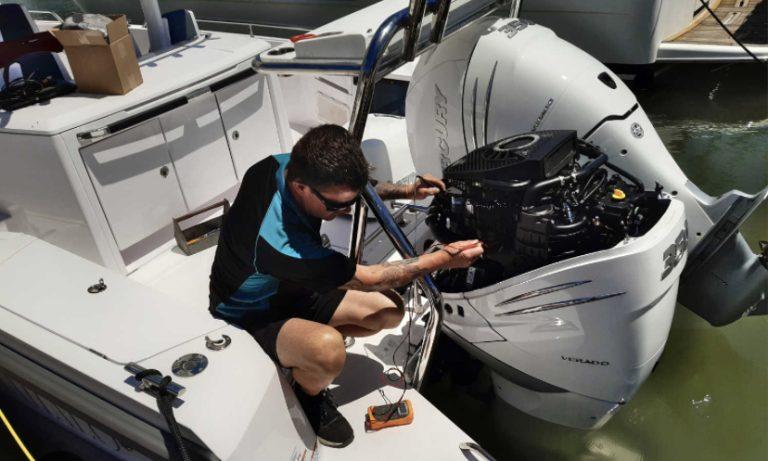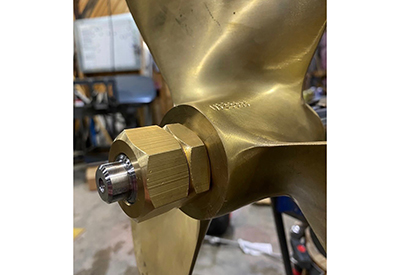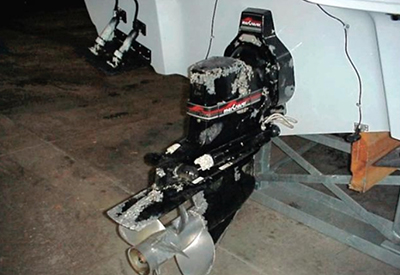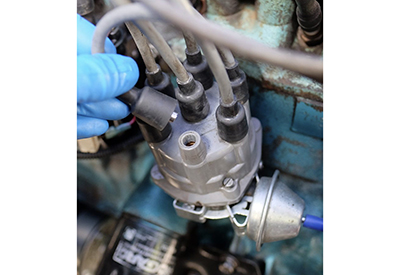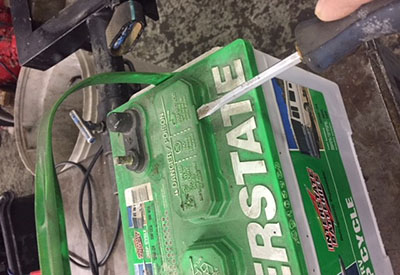Ask Andrew – Lifting, launching and trailering
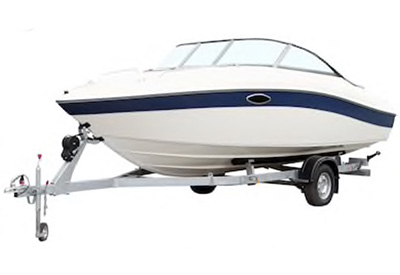
May 26, 2019
I’ve had two emails over the past few weeks with a count-down to launch (47 days per the last email), and instructions on how to prep for launch, including properly marking where slings should be placed.
Launch-day is filled with boat owners who aren’t sure where best to place the slings, and are left to rely on the best experience of the crane directors and travel-lift operators. Which got me thinking: How does the average boat owner easily and safely guide the launch crew on how to launch their boat? After all, every boat is different, and final responsibility on boat lifting rests with the owner, not the launch crew!
I’ll round out the article by talking about the checks that should be done once the boat is in the water, and some safety advice for those moving and launching via a towed trailer.
Lifting
Lets assume that all the ‘launch-crew’ checks are done: That the crane or lift is rated to lift your boat, that the slings, couplers and pins are all rated to carry the load (and are in good condition), that the launch crew are trained and able, and that external conditions are safe for a lift and launch.
What should the boat owner know?
1) The boat’s gross tonnage. This is not the vessel’s ‘displacement’ – rather, how much does it, and everything onboard actually weight, when lifted by a crane or travellift. This will be compared with the lift, crane, sling and attachment point ratings to ensure that all is safe
2) Location of external machinery (props, struts and shafts), location of transducers and through-hulls, and any on-deck (above the waterline) obstructions that the crane/lift crew should be aware of. Slings should not rest on a transducer, through-hull or a piece of machinery
3) Sling marks – this is the ideal placement of the slings – and the part that the owner is in the best position to know and understand. Slings put significant force on the outside of the hull, and should be placed in a location that is supported transversely inside the boat – ie, against a bulkhead. There are a few ways to determine this:
a. Looking at your vessels plans, locate the bulkheads and choose two bulkheads, fore and aft, that will complement the hull shape (this will differ for full keel, modified full-keel and fin keel boats).
b. By reviewing the vessel’s interior and lining up the physical bulkhead with a point on the bulkhead to place the sling mark.
c. By looking at the chain plates on the vessel’s gunwhale (in the case of sailboats) – chain plates are typically bolted to internal bulkheads, and provide a great guide
4) What’s inside. Is the bilge full of water? (it should be emptied first). Are there loose items inside the cabin that should be secured? Are items on deck removed or secured? Can bilges be accessed? Can engines be accessed? Are the batteries charged? Has the engine been summerized? Check all these items before launching the boat
 Launching
Launching
Lets assume that sling marks have been placed in ideal locations, and that the launch crew has performed admirably. The boat is now in the water, and you (as the vessel owner) are being rushed to get aboard and move your boat to clear the way for the next launch.
Here are a few things to check immediately after the boat is launched:
1) Check the bilge. Check each compartment, check each through-hull, check keel bolts and stuffing boxes. Confirm that no water is entering the boat. If it is, either run the bilge pumps to clear the water, or have the boat hauled out to determine the repair.
2) Check that seacocks are in the correct position. If the engine is to be run, double check the seacock to allow cooling seawater to enter the boat is open and that water can flow freely to the engine.
3) Check the list of the boat – is the boat level (fore and aft, and port/starboard) in the water. If it isn’t, why?
Trailering
If you’re moving your boat from storage to water via a trailer, there are a number of checks that should be performed before moving the trailer:
1) Is the trailer in good working order? Check Tire pressure, wheel bearings, trailer lights, and brakes (if equipped)
2) Does the trailer offer correct support? Are bunks placed properly, and are they in good condition? Is the winch operable and strapping in good condition?
3) Is the boat secure? At a minimum, the boat should be snug against the bow support, winched tightly, with the winch strap locked in place. Additionally, the transom should be strapped to the trailer on both port and starboard sides.
This is an exciting but important time of year to get ready for the season – performing the right prep work now can get you launched and on the water stress-free!
 Andrew McDonald is the owner of Lakeside Marine Services – a boat repair/maintenance firm based in Toronto. Andrew has worked in the marine industry for 12 years and is a graduate of the Georgian College ‘Mechanical Techniques – Marine Engine Mechanic’ program.
Andrew McDonald is the owner of Lakeside Marine Services – a boat repair/maintenance firm based in Toronto. Andrew has worked in the marine industry for 12 years and is a graduate of the Georgian College ‘Mechanical Techniques – Marine Engine Mechanic’ program.
Questions or comments for Andrew? Email him directly via: askandrew@lakesidemarineservices.ca

